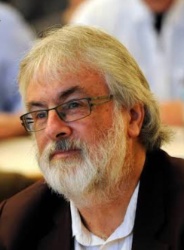Unveiling Female Muslim Teachers So Students See Their Lips
Unveiling Female Muslim Teachers So Students Can See Their Lips
by Richard S.
Ehrlich | Bangkok, Thailand
July 29,
2013
The Philippines, Asia's only Catholic-majority country, has ordered Muslim women to remove their facial veils when teaching the government's experimental curriculum of Arabic language and Islamic values, because students benefit by "seeing the teacher's lips."
"Teachers handling Arabic Language and Islamic Values Education (ALIVE) are requested to remove the veil covering the face -- 'niqab' -- when teaching in the classroom," said Education Department Secretary Armin Luistro in an Official Gazette announcement dated July 24.
"This is to promote better teacher-pupil relationship, and to support effective language teaching since seeing the teacher's lips helps in the correct production of letter sounds," Luistro said.
"Inside the classroom, she [the teacher] is requested to remove" any veil covering her entire face, "for proper identification of the teacher by the pupils," the Education Department had said in the Gazette one day earlier on July 23.
The Education Department expressed concern that its ban may be misunderstood as also including the Islamic female head scarf, known as a "hijab," while teachers are inside their classrooms.
The public should not have the wrong "impression that the DepEd (Department of Education) is ordering female Muslim teachers to remove their head covering, hijab," Luistro said in the Gazette.
They can wear a head scarf while teaching, if their face, including their lips, are exposed.
As soon as a teacher exits her classroom, she can cover her entire face as well.
"Covering of the whole face is allowed outside the classroom," among female Muslim teachers in the ALIVE program, the Education Department said in the Gazette on July 23.
Several years ago, the education department began training Muslim instructors to teach Arabic language and Islamic values through its ALIVE program in public elementary schools which have a significant Muslim population.
The program is "an Islamic-friendly and culturally-sensitive curriculum for Muslim learners," the government's Philippine Information Agency said in May 2012.
Schools in the capital, Manila, and "in the heartland of Muslim society" on the southern island of Mindanao, were benefitting from the program, Luistro said last year.
Madrasah students could use the ALIVE curriculum so "they have an equal chance of being employed as their counterparts who graduated in sectarian and non-sectarian schools, because they have been properly prepared," Luistro said.
Madrasah classes emphasize Islamic subjects such as Arabic, memorization of the Koran, Shariah law, and how to behave according to the Koran and other religious texts and traditions, but often do not teach other subjects at the same level as the Philippines public education system.
In August 2012, Catholic-run Pilar College in the south sparked an uproar when it became the first campus in the Philippines to ban Muslim female students from wearing either a hijab headscarf or niqab face veil on its property.
The National Commission of Muslim Filipinos wrote to Pilar College in Zamboanga, a port city on Mindanao island, and requested its ban be lifted.
The Mindanao Examiner newspaper reported that the Congregation of the Religious of the Virgin Mary, which operated the school, replied: "Our origin is Roman Catholic, and we cannot deviate from that origin."
"It is true we cater to students of different religions, but before they are officially enrolled, during interviews of student applicant, rules and regulations are explained to them particularly the non-wearing of the hijab or veil."
Last month, the college reluctantly lifted its ban on the head scarf after human rights activists -- supported by the Philippine Alliance of Human Rights Advocates -- started an online campaign demanding the school be boycotted.
The National Commission of Muslim Filipinos also pointed to the education department's ruling that stated: "Female Muslim school children should be allowed to use their veil or head dress inside the school campus."
One Muslim lawyer, Yasser Apion, a Muslim, said the hijab is "not about fashion or trend for Muslims...it is obligatory, and girls reaching puberty have to wear the hijab," according to the Philippine Daily Inquirer.
After lifting its ban on the head scarf, however, Pilar College kept its ban on niqab face veils, the paper said.
About 80 percent of the Philippines population is Roman Catholic, and an additional 10 percent belong to other Christian denominations.
Muslims, who live mostly in the south, comprise about 5 percent of the country's total 105 million people.
Islam arrived in the Philippines during the 13th century.
The Spanish Empire brought Christianity to the islands after European explorer Ferdinand Magellan landed in 1521.
Richard S. Ehrlich is a Bangkok-based journalist from San Francisco, California, reporting news from Asia since 1978, and recipient of Columbia University's Foreign Correspondent's Award. He is a co-author of three non-fiction books about Thailand, including "Hello My Big Big Honey!" Love Letters to Bangkok Bar Girls and Their Revealing Interviews; 60 Stories of Royal Lineage; and Chronicle of Thailand: Headline News Since 1946. Mr. Ehrlich also contributed to the final chapter, Ceremonies and Regalia, in a new book titled King Bhumibol Adulyadej, A Life's Work: Thailand's Monarchy in Perspective.
His websites are:
http://asia-correspondent.tumblr.com
http://www.flickr.com/photos/animists/sets
https://gumroad.com/l/RHwa


 Binoy Kampmark: Secrecy And Virtue Signalling - Another View Of Signalgate
Binoy Kampmark: Secrecy And Virtue Signalling - Another View Of Signalgate Gordon Campbell: On The Americanising Of NZ’s Public Health System
Gordon Campbell: On The Americanising Of NZ’s Public Health System Ian Powell: Trumpian Health Leadership
Ian Powell: Trumpian Health Leadership Eugene Doyle: Disruption - Historians Challenge Russophobic Propaganda
Eugene Doyle: Disruption - Historians Challenge Russophobic Propaganda Ramzy Baroud: War, Doublethink, And The Struggle For Survival - Geopolitics Of The Gaza Genocide
Ramzy Baroud: War, Doublethink, And The Struggle For Survival - Geopolitics Of The Gaza Genocide Binoy Kampmark: Authoritarian Politics - Netanyahu’s War On Israeli Institutions
Binoy Kampmark: Authoritarian Politics - Netanyahu’s War On Israeli Institutions